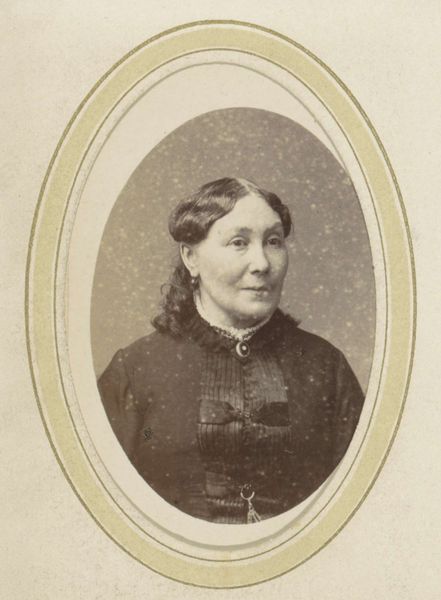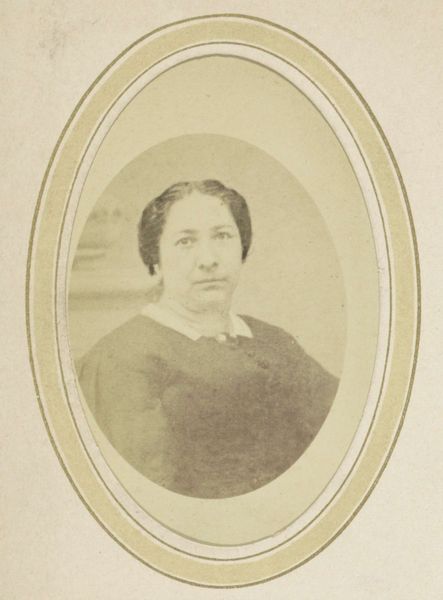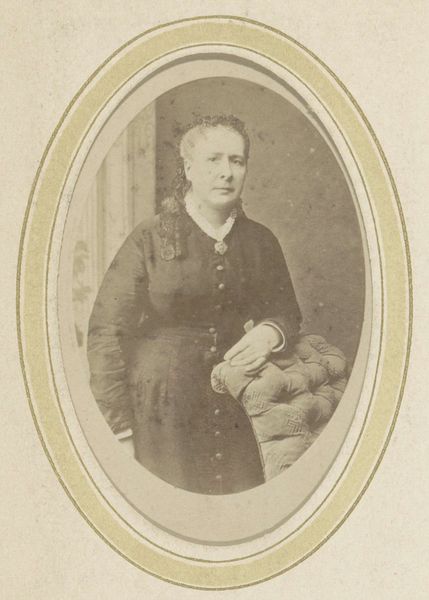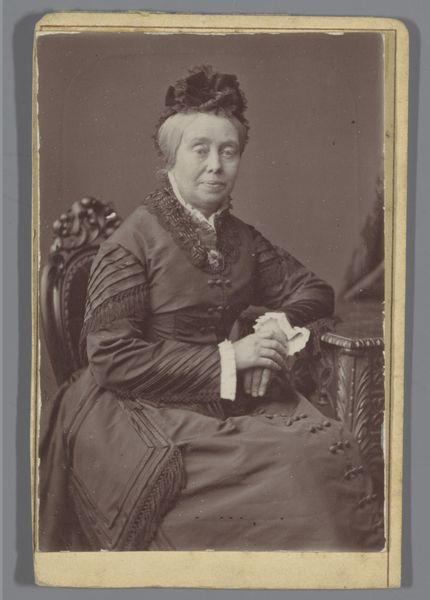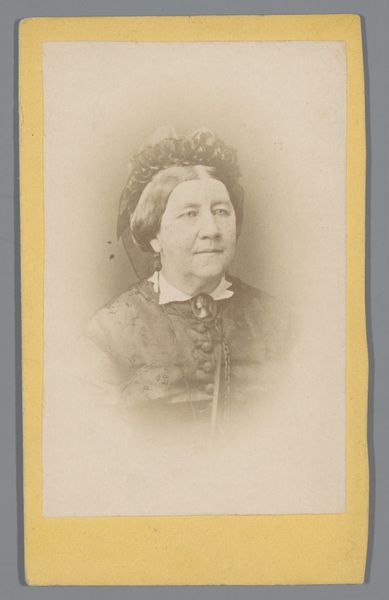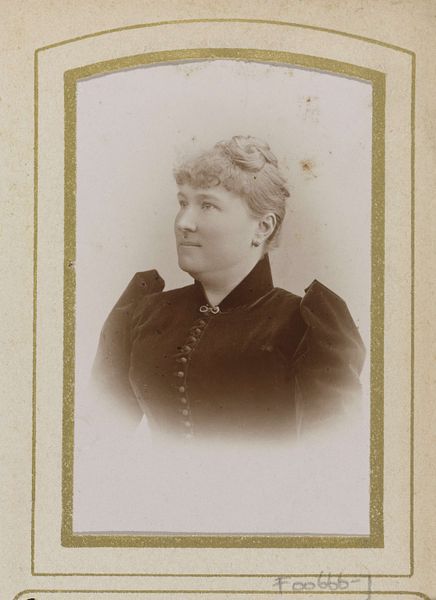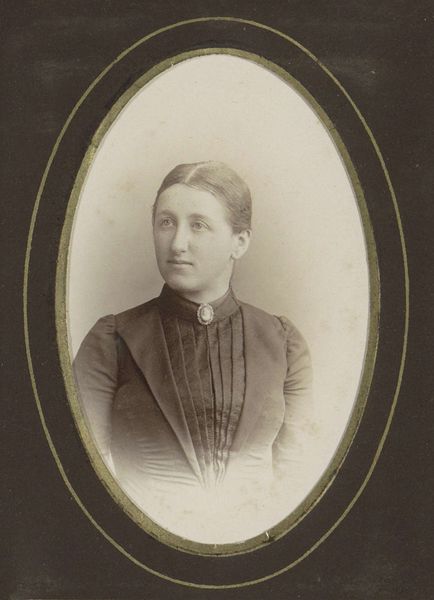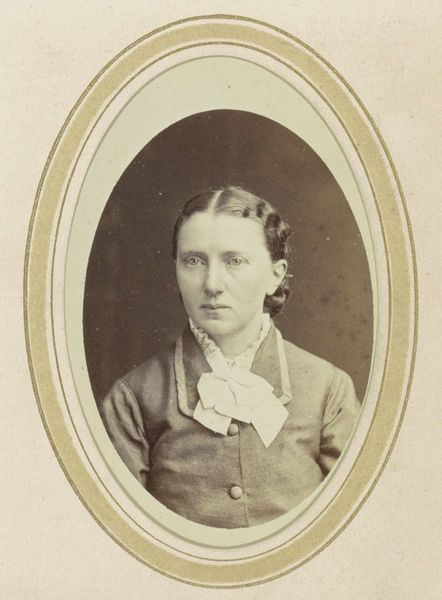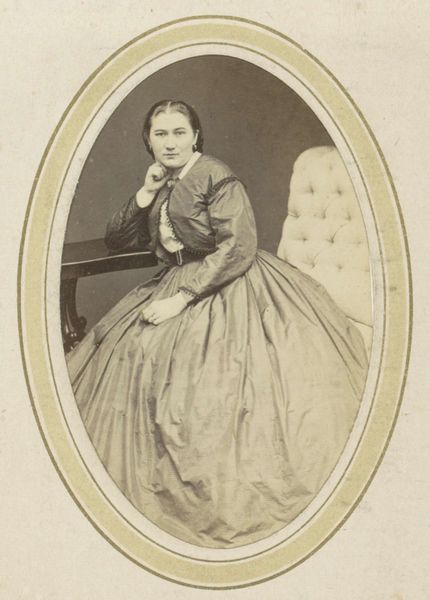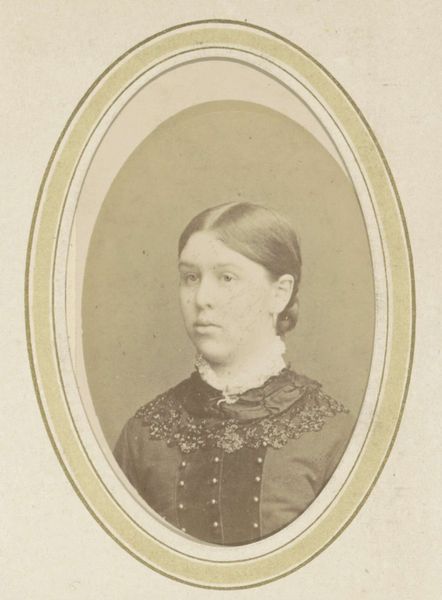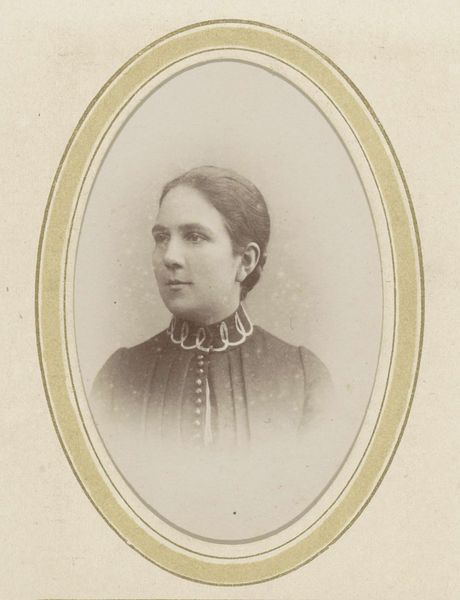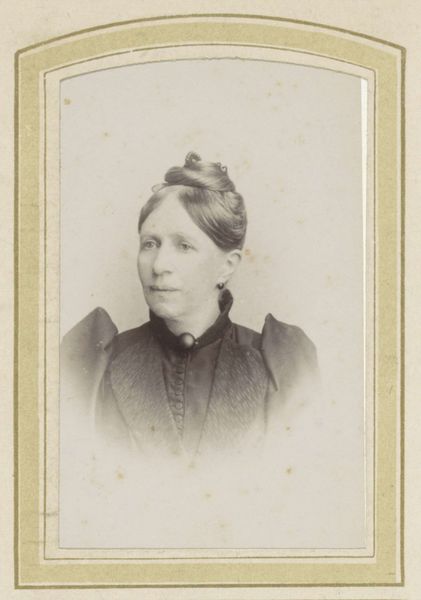
Portret van een vrouw met een strik, aangeduid als Temmink c. 1866 - 1900
0:00
0:00
photography
#
portrait
#
photography
#
19th century
Dimensions: height 91 mm, width 54 mm, height 100 mm, width 63 mm
Copyright: Rijks Museum: Open Domain
Editor: This is a photograph titled "Portrait of a Woman with a Bow, Referred to as Temmink," dating from around 1866 to 1900, attributed to Johan Christiaan Reesinck. The sepia tones give it such an antique feel. How do you approach something like this from a formalist perspective? Curator: Initially, observe how the ovoid frame immediately dictates the composition, centering the subject. The woman's face is the focal point, a study in light and shadow achieved through photographic techniques available at the time. Notice how the minimal tonal range directs your gaze? Editor: Yes, I see that, and the framing does keep the eye focused on her face. Is there a reason why the subject is always facing towards the right? Curator: Precisely. The subtle asymmetry creates a visual dynamic. We might also consider the material quality of the photograph itself - its texture and the way light reflects off the surface contribute to our understanding. Consider the crispness of the central figure contrasting with a softer quality towards the edge of the frame; this is typical for portrait photography of the period. It leads to speculation around the technical apparatus required and used. Editor: So it's less about who she *is* and more about how the photographer captured her likeness? What impact the light has on an eye, and how the choice to present that is impactful itself. Curator: Indeed. Our focus lies on dissecting the language of visuality: the choices made in composition, lighting, and framing. Editor: That's helpful. I was getting lost in wondering about her life, and now I see that understanding it in a purely technical manner helps with comprehension. Thank you! Curator: Of course. It allows us to move into any study more objectively with tangible understandings and observations.
Comments
No comments
Be the first to comment and join the conversation on the ultimate creative platform.
